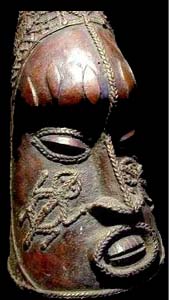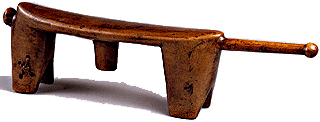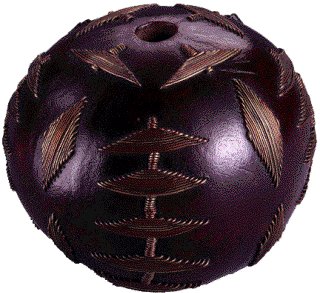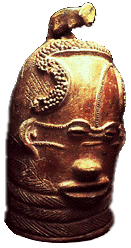ART AND AESTHETICS
Traditional african sculpture can be analized in terms of form and composition through ten aesthetic principles:
-
CREATIVITY: originality beyond the simple naturalism

-
STYLIZED REALISM: human figure is present, but the image is idealized and the emphasis is underlined more in some parts of the body rather than in others
-
COMBINATION OF DETAILS: different nuances are used to confer expression
-
DYNAMIC FORM: use of volumes to break up/split with the natural realism
-
SYMBOLIC IMAGES: visual images have a precise message
-
GEOMETRICAL MOTIVES: the use of geometrical forms give harmony and simplicity
-
ELEGANT PROPORTIONS: change of the normal proportions of the figure to point out/emphasize the importance of the parts and the balance between them. For instance the head, which symbolize wisdom and personality, is 1/3 of the whole body, while hands and feet are very small and less relevant
-
HARMONY: a balance among the elements
-
USE OF CONTRASTING MATERIALS: the assembly of very different pieces, such as bones, grass, blood, feathers, birds' skulls, shells, etc.
-
DIFFERENT SURFACES: the product of the manufacturing/ workmanship of materials

 Principal
Materials:
Principal
Materials:
- wood
- stone
- ivory
- terracotta
- metal (brass, bronze)
|
Lydenburg
Head Eastern Transvaal, South Africa, ca. A.D. 500-700. Traces of white pigment and specularite on clay, 38 x 26 x 25.5 cm. University of Cape Town Collection at the South African Museum, Cape Town. |
 |
Headrest,
Zulu or Nguni, South Africa, Collection of Marc and Denyse
Ginzberg
Objects of personal use were much prized; they served as markers of their owners' positions in society and were often buried with them.
|
 |
Snuff
Container
|
SOURCES:
IMAGES: http://artnetweb.com/guggenheim/africa/south.html

